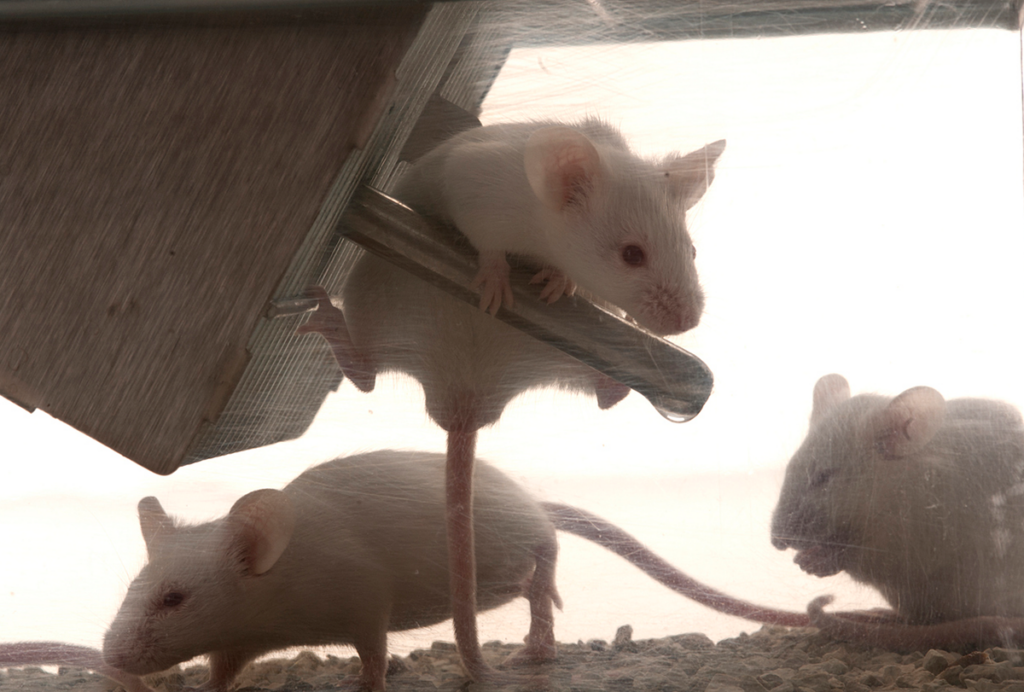Ratio reversal; gender bender; ad accusations and more
The male-dominated sex bias in autism is reversed in a related syndrome, a researcher’s gender could influence her study’s outcome, and an award-nominated ad featuring a young man with autism draws criticism.
- The sex bias in autism skews toward males, but one associated syndrome shows the reverse pattern. Among people with Smith-Magenis syndrome who also have autism features, girls outnumber boys by 3 to 1, researchers reported 8 January in Molecular Autism.
The investigators did not find a skewed ratio for intelligence scores or for emotional or behavioral measures. The syndrome, which is caused by a deletion on chromosome 17, does not trace to a sex chromosome, so the reason for the sex bias is unclear, the researchers say.
- Research into oxytocin as a treatment for autism has yielded mixed outcomes. In a review published 10 January in Science Advances, some investigators offer a possible explanation: The researcher’s gender might affect the results.
NPR’s “All Things Considered” also took a look at this idea. One investigator the show quoted worried that oxytocin, inaccurately called the ‘love hormone,’ could “waft through the air” and interfere with tests when heterosexual researchers and participants are of opposite sexes. But love doesn’t have to be in the air for sex to have an influence. Even lab mice may show different effects based on the sex of lab workers.
- The gene-editing tool CRISPR has been hailed as a breakthrough with huge potential, including for treating some developmental conditions, but problems loom. A new twist in the circuitous path to clinical use comes courtesy of the immune system, investigators reported 5 January in a study published on the preprint server bioRxiv. The researchers say the human immune system produces antibodies against a key component of the tool, potentially mitigating its effectiveness.
- People with intellectual disabilities are suffering an “epidemic of sexual abuse,” NPR’s “All Things Considered” reported 8 January after a year of investigation. Not only do such crimes go unreported, but the victims may be abused again and again. The crimes occur where people with disabilities are supposed to be safest and most protected.
- The United States has approved a patent for a method to determine autism risk using tissue samples from fetuses or children. LabCorp, the company granted the patent, says the test can help diagnose several conditions related to autism, including Rett syndrome and childhood disintegrative disorder. The approach relies on pinpointing genetic variants linked to autism, North Carolina’s Times-News reported 7 January.
- The neuroscience community is not immune to the biases that limit workplace diversity. The proportion of women authors on papers published in Nature Neuroscience, and among the reviewers of those papers, barely budged between 2006 and 2016, the journal’s editors note in the December issue. The proportion of women moving from graduate school to the tenure track has also changed little in the past decade, they write.
- An ad for the tech giant Apple that debuted in April 2016, in conjunction with Autism Acceptance Month, features a young man named Dillan. The ad, which has been nominated for a 2017 Webby Award, has drawn considerable criticism because it shows Dillan using a controversial form of assistive communication called the Rapid Prompting Method. Critics call the method “pseudoscience” and have concerns that words attributed to individuals with autism might really be the expression of the aides helping them use the technology, The Verge reported 9 January.
- Tiny duplications in a specific region of chromosome 7 are tied to autism-like features. Because few people carry these microduplications, efforts to characterize their effects have been slow. Among other features, people with the duplication have small brain structures, such as the cerebellum, according to a report on 12 such people published 20 December in the Journal of Intellectual Disability Research.
- A variant of CD38, a gene tied to oxytocin regulation, is also linked to autism. Mice lacking CD38 show differences in brain cell number and structure, especially in the visual cortex and the hippocampus, the seat of memory, researchers reported 3 January in Neuroscience. The findings complement earlier results indicating problems with social behavior in these mice.
- The exclusion of people with autism or other disabilities from jobs in the publishing industry has multiple negative consequences, disability activists say. Fewer than 1 in 10 publishing industry workers has a disability, Bustle reported 10 January. These low numbers mean a lack of gatekeepers against stereotypes in books and other materials, the activists say.
Including people with disabilities in all parts of the publishing process will also broaden the talent pool and bring authenticity to disability narratives that reach the public, the activists told Bustle.
- Do you have a new paper coming out? Are you making a career move? Did you see a study or news story that you want to share? Send your news tips to [email protected].
Recommended reading
Explore more from The Transmitter

Cracking the neural code for emotional states



